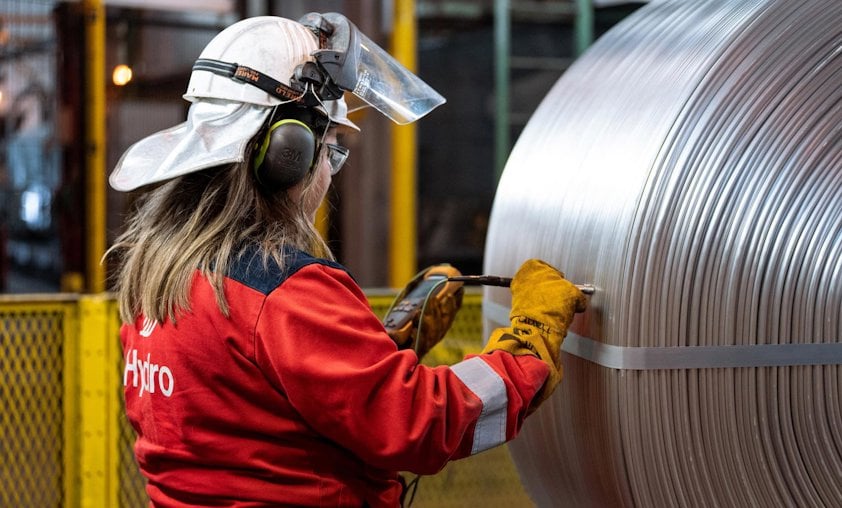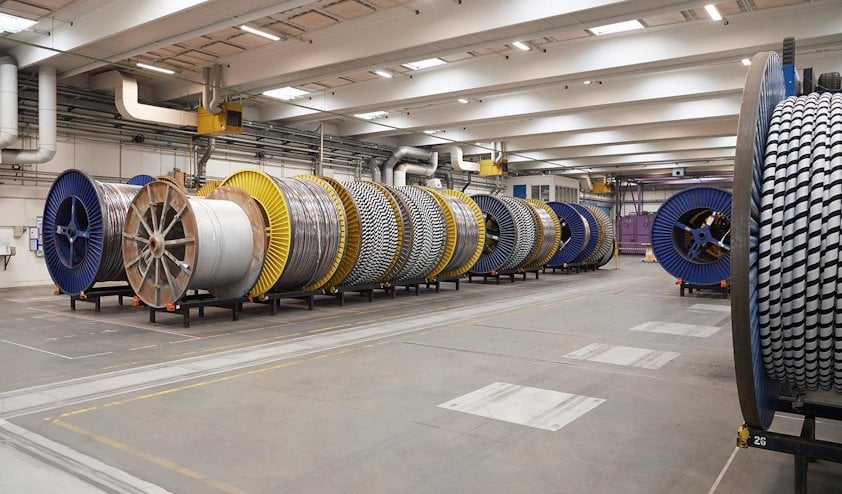Towards 2030, Hydro and NKT will collaborate on R&D and product development to explore aluminium wire rod applications that allow for even lower-carbon footprint while maintaining quality. Projects will be conducted within both primary and recycled aluminium.
“Power cables play a vital role in transmitting and connecting renewable energy, and the power infrastructure segment has a significant potential for increased use of aluminium. Our joint roadmap with NKT will pave the way for aluminium and thereby reduce the embedded carbon in Europe’s power grid,” says Eivind Kallevik, Executive Vice President for Hydro Aluminium Metal.
Despite the rapid growth of renewable energy, outdated and inadequate power grids could prove to be a significant stumbling block to the green transition. To achieve the goal of limiting global warming to 1.8 degrees Celsius, an estimated USD 3.1 trillion investment in grid infrastructure is needed before 2030, according to research from independent research and business intelligence company Rystad Energy.
Low-carbon aluminium power cables
Hydro’s advanced technological expertise combined with accurate production equipment ensures a high and consistent product quality, using the most climate and energy efficient aluminium production technology in the world.

“We are proud to form this strategic partnership with Hydro, a long-term partner. Hydro has a proven track record of delivering low-carbon aluminium and will help us satisfy the growing demand in our industry for solutions with a lower-carbon footprint,” says Will Hendrikx, COO and Deputy CEO at NKT.
According to International Energy Agency (IEA), the world needs to add or refurbish a total of over a staggering 80 million kilometers of grids by 2040, the equivalent of the entire existing global grid. Aluminium’s high conductivity and flexibility, combined with its light weight and that it is considerably less expensive than other metals typically used in power cables, makes aluminium an optimal solution for the development of the renewable energy grid.
Building on several successful pilot projects in 2023, NKT will integrate Hydro’s low-carbon aluminium, Hydro REDUXA 4.0, into its medium voltage power cable solutions in 2024, and later within some of its high voltage power cables. These cables are playing an increasingly vital role in connecting and transmitting renewable energy. This aligns with NKT's sustainability strategy, contributing to the company's ambitions to decarbonize and offer more sustainable solutions to its customers.
“Despite working in an energy intensive sector, Hydro is leading its industry towards more sustainable solutions with a strong emphasis on decarbonization, as well as biodiversity and social responsibility. We look forward to our continued collaboration with Hydro in the coming years,” says Hendrikx.

Optimizing the aluminium value chain from mine to cable
Hydro has a unique ability to utilize the integrated value chain to deliver low-carbon aluminium products, complete with traceability and transparency at every step from mine to component. Hydro is making significant strides towards carbon reduction goals, targeting a 30 percent reduction in its carbon emissions by 2030, primarily driven by fuel switching and boiler electrification at the Alunorte alumina refinery in Brazil.
As part of Hydro’s roadmap towards 2030, the company will also step up its ambitions within technology development, growth in aluminium recycling and renewable power generation. These are all key elements to take Hydro’s already industry leading aluminium solutions further towards zero, developing zero-carbon greener aluminium with net-zero emissions by 2050 or earlier.
“With this collaboration we continue our strategy of entering into long-term partnerships with sustainability leaders in industries that are crucial for the green transition. NKT and Hydro share a focus on reducing our impacts across the value chain from mine to finished power cables. We look forward to collaborating on all emissions scopes to pioneer completely new ways of working. Together we can change the game,” says Eivind Kallevik.
As part of the partnership and the aim to reach the lowest possible CO2 levels in the aluminium cable value chain, Hydro and NKT will also collaborate on minimizing emissions associated with warehousing, logistics and transportation, as well as opportunities for efficient, closed-loop supply chains with the aim to optimize recycling and use of scrap.
NKT connects a greener world with high quality power cable technology and takes center stage as the world moves towards green energy. NKT designs, manufactures and installs low, medium and high voltage power cable solutions enabling sustainable energy transmission.
Since 1891, NKT has innovated the power cable technology building the infrastructure for the first light bulbs to the megawatts created by renewable energy today. NKT is headquartered in Denmark and employs 5,000 people. NKT is listed on Nasdaq Copenhagen and realized a revenue of EUR 2.6 billion in 2023.
Hydro REDUXA is a series of certified, low-carbon aluminium. It is made with renewable energy, which results in a maximum carbon footprint of 4.0 kg CO2 per kg aluminium, one-fourth of the global average. The result is among the world’s lowest-carbon aluminium to date.
Hydro is, together with partners like NKT, exploring ways to reduce the carbon footprint further, including processes to add recycled aluminium directly within the primary production process and decarbonizing the aluminium value chain.
Published: March 6, 2024








